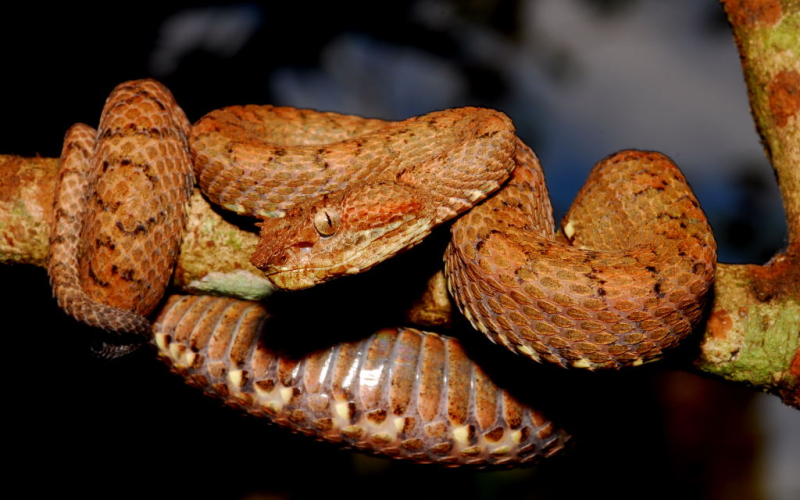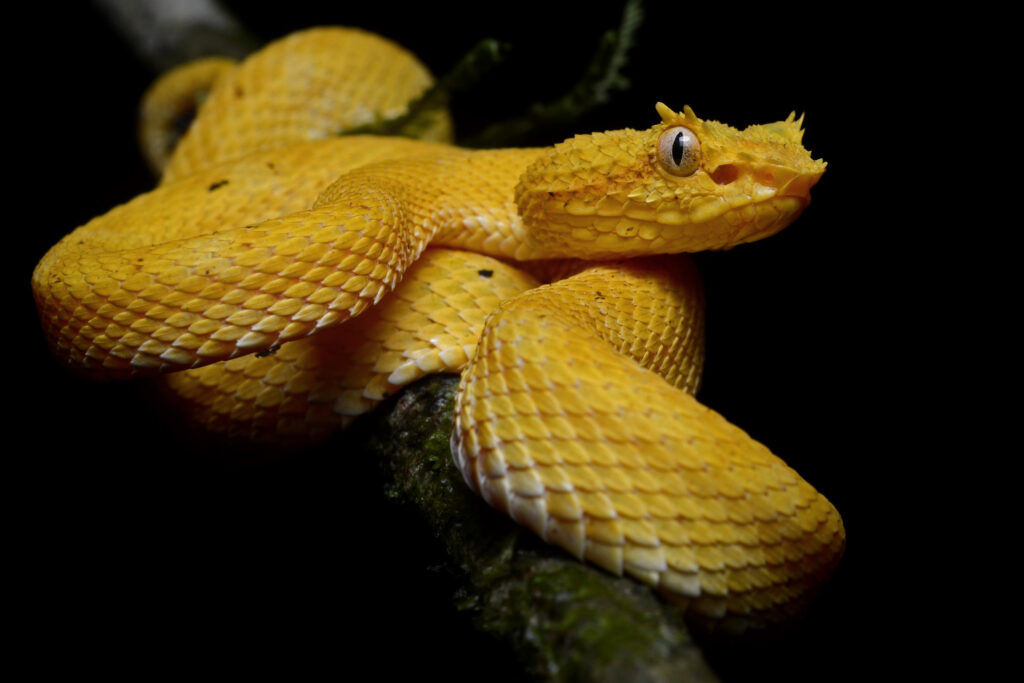Bocaracá: the eyelash palm-pitviper of Costa Rica’s Forests

Bocaracá
Costa Rica is home to at least 141 species of snakes. With such biodiversity packed into a relatively small territory, one might assume that snake sightings are common. However, many of these species tend to avoid human contact and dwell in remote areas, making encounters rarer than one might expect. This is the case of the bocaracá, also known as Bothriechis schlegelii or eyelash palm-pitviper.
A Snake of Many Colors
This species is well-known under several names in both English and Spanish: eyelash viper, Schlegel’s pitviper, bocaracá, toboba de pestañas, or oropel (when displaying its golden-yellow coloration).
The variety of names reflects the species’ remarkable range of colors. It can appear in shades of green, brown, orange, pink, white, or yellow—each with unique patterns such as spots, bands, or speckles. The diversity in coloration is so striking that it may seem like you’re looking at entirely different species.



Among Roots and Bromeliads
One of its most distinctive traits, regardless of color, is the presence of raised scales above the eyes resembling eyelashes. These structures might serve as camouflage by breaking up the snake’s outline, or possibly as protection while navigating through roots, vines, and bromeliads.
The bocaracá inhabits humid lowland and foothill forests. It is not found in the driest regions or at high elevations. It can be spotted curled up among forest-floor roots, near streams, or perched on branches amid epiphytic plants. Juveniles tend to stay lower, feeding on small amphibians and reptiles, while adults hunt birds and small mammals in the upper canopy. The snake uses a potent venom, delivered through hollow fangs, to immobilize its prey.
The bocaracá is an iconic species of Costa Rica’s forests. Though not always easy to find, each sighting offers a valuable opportunity to appreciate the country’s rich and mysterious biodiversity.
Sensorial Sunsets
Previous article San Lucas is a prison island in Costa Rica that is being transformed into a national park and tourist site
Navigate articles





